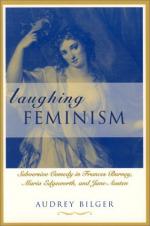|
This section contains 6,512 words (approx. 22 pages at 300 words per page) |

|
SOURCE: "Chapter Two," in Doubt and Dogma in Maria Edgeworth, University of Florida Press, 1967, pp. 23-38.
In the following essay, Hawthorne distinguishes between the didacticism imposed on Edgeworth's fiction by her father and the plot and character development that reflect her own authorial tendency.
Between 1798 and 1801, Maria Edgeworth earned her reputation as a creative writer. Her father had begun cultivating her talents along this line as early as May, 1780, when he asked her to "send [him] a little tale, about the length of a Spectator, upon the subject of Generosity." As a result of his encouragement, her earliest stories are all didactic or, as she would have said, moral. In Ireland surrounded by her little brothers and sisters, she discovered the dearth of children's stories, there being little written expressly for children except Thomas Day's Sandford and Merton and a handful of tales by Mrs. Barbauld. So she...
|
This section contains 6,512 words (approx. 22 pages at 300 words per page) |

|


